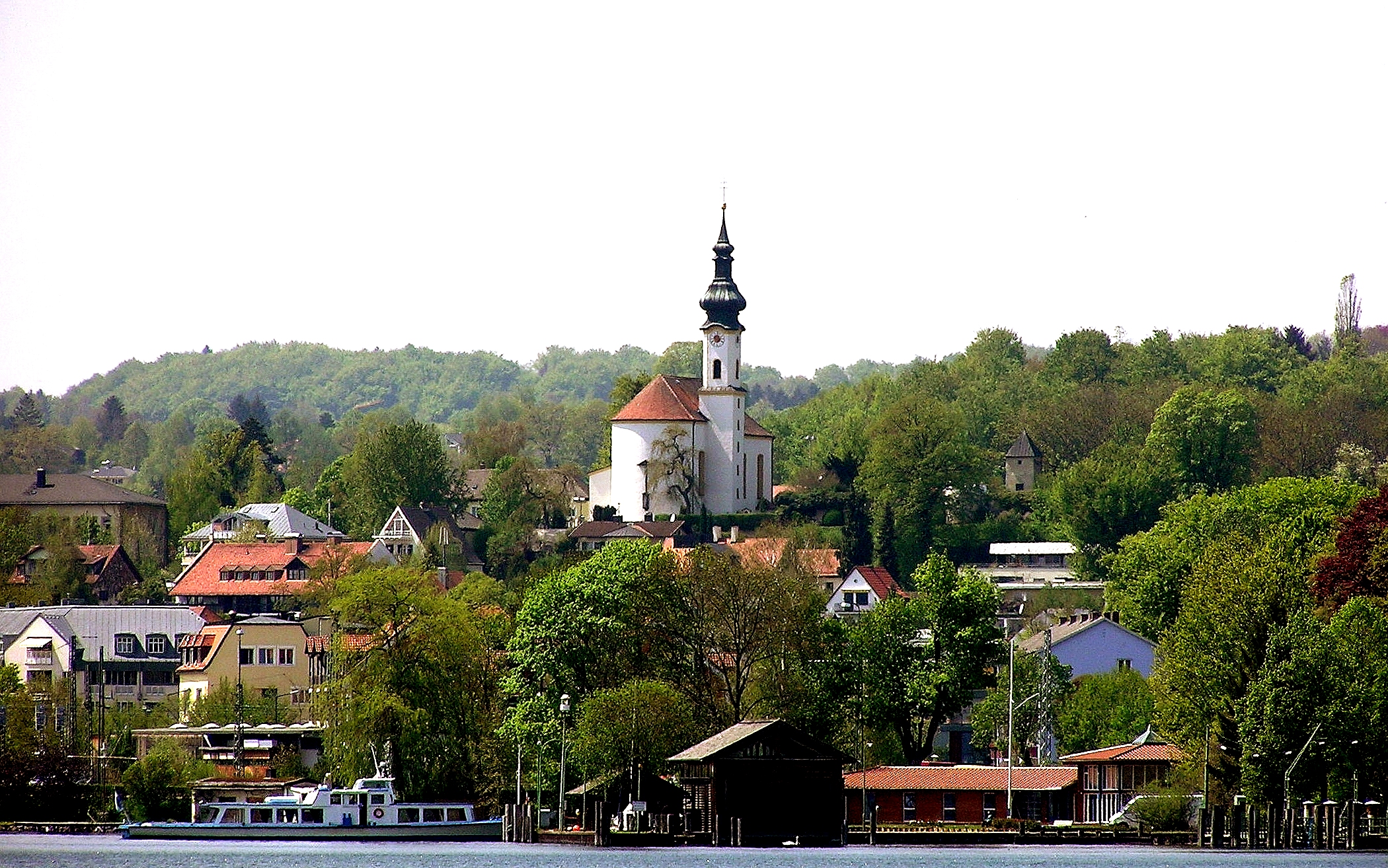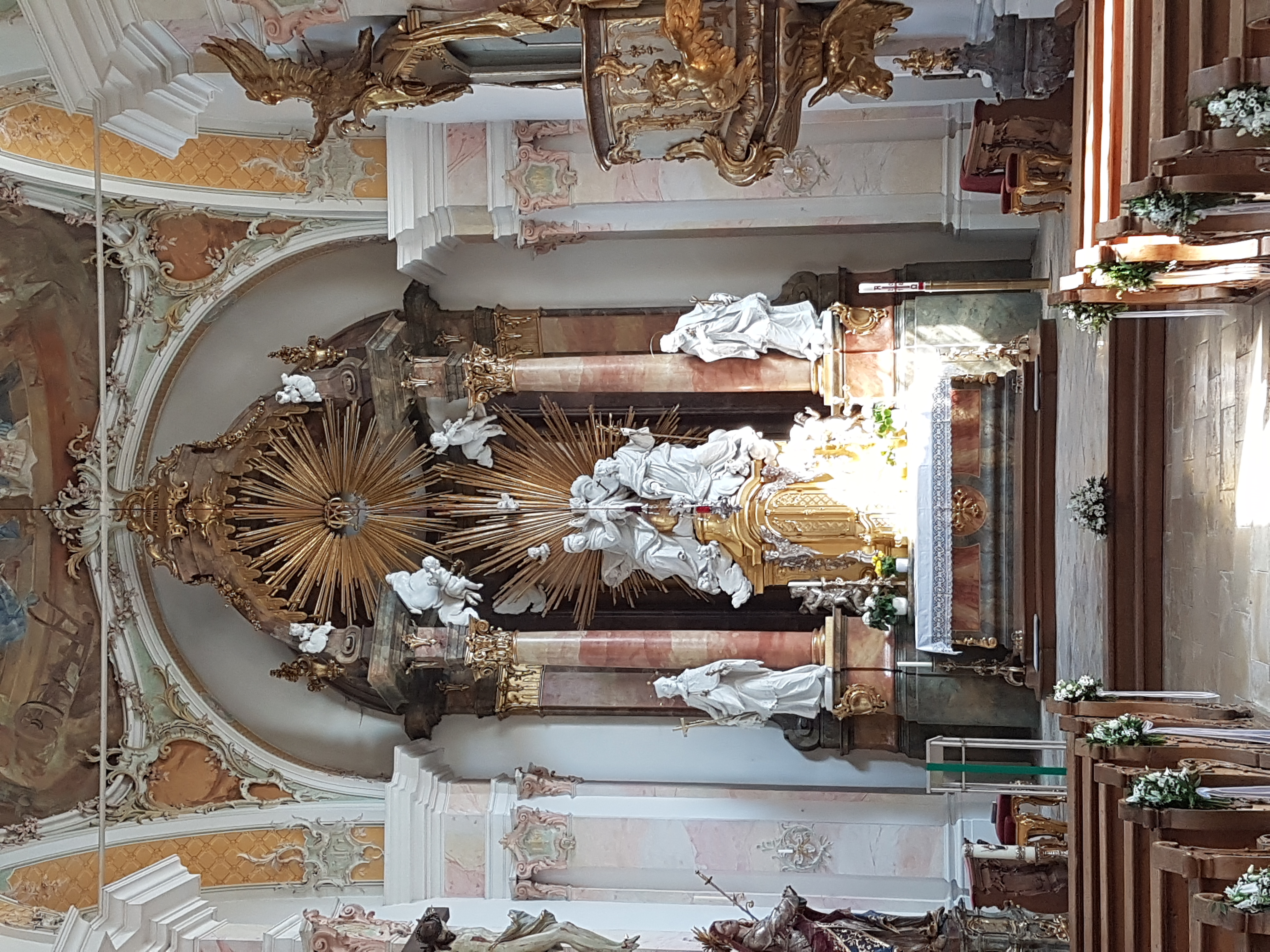St. Joseph (Starnberg) on:
[Wikipedia]
[Google]
[Amazon]

 St. Joseph is a Rococo church in
St. Joseph is a Rococo church in
 The church as a whole was built in the Rococo, the calm
The church as a whole was built in the Rococo, the calm
File:St Josef am Schlossberg, Starnberg - 12.jpg, Inside with Rococo furnishings
File:St Josef am Schlossberg, Starnberg - 9.jpg, Saint Peter altar
File:St Josef am Schlossberg, Starnberg - 8.jpg, Saint Sebastian altar
File:St Josef am Schlossberg, Starnberg - 2.jpg, Left north side of the nave
File:St Josef am Schlossberg, Starnberg - 1.jpg, Right south side of the nave
File:St Josef am Schlossberg, Starnberg - 7.jpg, Vault frescos of the choir and nave
 St. Joseph is a Rococo church in
St. Joseph is a Rococo church in Starnberg
Starnberg is a German town in Bavaria, Germany, some southwest of Munich. It is at the north end of Lake Starnberg, in the heart of the " Five Lakes Country", and serves as capital of the district of Starnberg. Recording a disposable per-capi ...
, Bavaria, Germany. It was built in the second half of the 18th century. The high altar of the church was created by Ignaz Günther.
Location and naming
The church is located up on the hills on the west side of Starnberg. It is directly adjacent to the small castle garden that lies between it and Starnberg Castle. She has her patronage fromSt. Joseph
Joseph (; el, Ἰωσήφ, translit=Ioséph) was a 1st-century Jewish man of Nazareth who, according to the canonical Gospels, was married to Mary, the mother of Jesus, and was the legal father of Jesus. The Gospels also name some brothers ...
, patron of Bavaria since 1764.
Stalls and pulpit
The pews, the choir stalls, the confessionals, and the lower pillars of the west gallery are the work of Bartholomäus Zwinck. He created them in Murnau in 1766. Thegilded
Gilding is a decorative technique for applying a very thin coating of gold over solid surfaces such as metal (most common), wood, porcelain, or stone. A gilded object is also described as "gilt". Where metal is gilded, the metal below was tradi ...
pulpit
A pulpit is a raised stand for preachers in a Christian church. The origin of the word is the Latin ''pulpitum'' (platform or staging). The traditional pulpit is raised well above the surrounding floor for audibility and visibility, access ...
on the right pillar of the triumphal arch is also made by Zwinck. It is considered a "cabinet piece." It refers to the Evangelist John and shows his main attributes, taken from the Book of Revelation: on the pulpit the eagle, next to the pulpit the lion and man, and below the bull. The pulpit was originally made for the Elisabeth Church in Munich and was also installed there; it has only been in St. Joseph since the beginning of the 19th century.
The crucifix on the left is likely a work by Philipp Jakob Rämpl, also from the 18th century.
Side altars
The side altars represent Saint Peter on the left and Saint Sebastian on the right. Both are shown with their attributes, Peter holds the key to heaven, Sebastian has an arrow in his side, corresponding to his martyrdom. They are neo-baroque works, created in 1854. The Petrus altar is byWilhelm Hauschild
Wilhelm Hauschild (16 November 1827 – 14 May 1887) was a German historical painter. He created murals for Neuschwanstein Castle.
Life
Wilhelm Hauschild, whose father was a master weaver, completed an apprenticeship with the decorative pain ...
, the Sebastian altar by Eduard Schwoiser.
High altar
Created by Ignaz Günther, the group of the Holy Family, Mary holding the baby Jesus, Joseph on the right side around a globe, is carved from linden wood. The people next to the putti are painted white for emphasis. Except for the figures, the altar is gilded. It forms an imaginary triangle from the middle putto floating in a halo to the clouds on the left and the lying putto on the right. The lack of an altar painting is unusual, but due to the structure of this construction it was no longer necessary. The altar is accompanied by two figures also framed in white, on the left Saint John of Nepomuk and on the right Saint Francis Xavier. The church as a whole was built in the Rococo, the calm
The church as a whole was built in the Rococo, the calm stucco
Stucco or render is a construction material made of aggregates, a binder, and water. Stucco is applied wet and hardens to a very dense solid. It is used as a decorative coating for walls and ceilings, exterior walls, and as a sculptural and a ...
, the little gilding and the very restrained, pastel-colored painting show the transition to neoclassicism
Neoclassicism (also spelled Neo-classicism) was a Western cultural movement in the decorative and visual arts, literature, theatre, music, and architecture that drew inspiration from the art and culture of classical antiquity. Neoclassicism was ...
.{{Cite journal, title=14. Switzerland, url=http://dx.doi.org/10.1163/wcrc-206b14, access-date=2020-10-05, website=World Council of Churches Online: Relations with the Roman Catholic Church, doi=10.1163/wcrc-206b14
Interior of the church
Notes